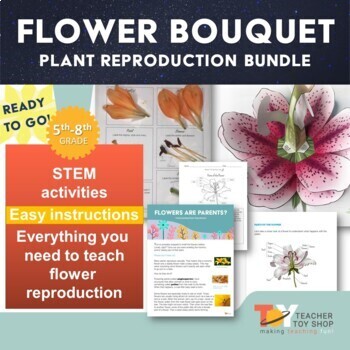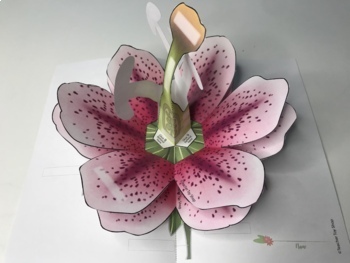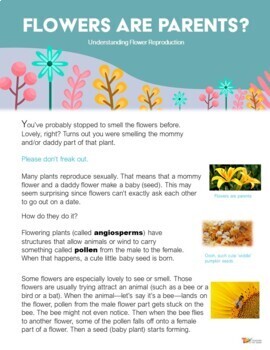Parts of a Flower Unit - Worksheets, Activities, Labs, and More!
- Zip
- Google Apps™
- Easel Activity
- Easel Assessment

Products in this Bundle (5)
Also included in
- All of Teacher Toy Shop's Life Science resources in one place! Some biology topics included: cells, ecosystems, human body systems and organs, flowers, reproduction, human eye, and more. Includes NGSS aligned lessons, experiments using the Scientific Method, and more.Purchase this bundle for a low-pPrice $49.99Original Price $80.66Save $30.67
Description
Looking for a comprehensive and engaging bundle to teach all about the parts of a flower? Download Parts of a Flower Unit - Worksheets, Activities, Labs, and More! This all-inclusive bundle is designed to equip educators with everything needed to seamlessly teach flowering plant reproduction, making the learning process both enjoyable and memorable for students. Perfect for middle school life science or high school biology classes, this versatile bundle can also fulfill scouts flowers badge requirements and adds a delightful seasonal touch to science projects for Valentine's Day, Mother's Day, and Father's Day, and more!
► Key Features:
- Versatile Applicability: Ideal for middle school life science and high school biology classes, this bundle seamlessly aligns with scouts flowers badge requirements and adds a festive touch to seasonal science projects.
- Interactive and Hands-On: From DIY pop-up flower cards to a flower dissection lab, the activities in this bundle encourage active participation, fostering a deeper understanding of flowering plant reproduction.
- Humor Infusion: The inclusion of humor in the presentation and reading comprehension packet ensures that the learning experience is not only educational, but also enjoyable for students.
► What's Included:
- Dynamic Slides Presentation: Dive into an entertaining and informative presentation that not only covers the essential parts of a flower, but also adds humor to keep students engaged.
- DIY Pop-Up Flower Card: Combine creativity with learning as students craft their own pop-up flower cards, reinforcing their understanding of flower anatomy in a hands-on way.
- Flower Dissection Lab: Explore the intricate details of flowering plants through a hands-on dissection lab, providing a practical and immersive experience.
- Humorous Reading Comprehension Packet: Enhance understanding with a funny and informative packet that covers key concepts in flowering plant reproduction, ensuring that students not only grasp but also retain the material.
- Parts of a Flower Word Search: Make learning fun with an interactive word search activity that reinforces flower anatomy terminology.
- Abundant Flower Diagrams: Access a variety of flower diagrams to facilitate learning and visualization of flower anatomy from different perspectives.
- Flower Bell Ringers: Start each class with engaging bell ringer activities centered around flowers, setting a positive and focused tone for the lesson.
Transform your classroom into a floral laboratory of learning with Parts of a Flower Unit - Worksheets, Activities, Labs, and More! Download this comprehensive unit today and cultivate a vibrant and memorable educational experience for your students!
You Might Also Like...
✪ Don't forget to follow Teacher Toy Shop to be the first to know about new products, sales and freebies!






